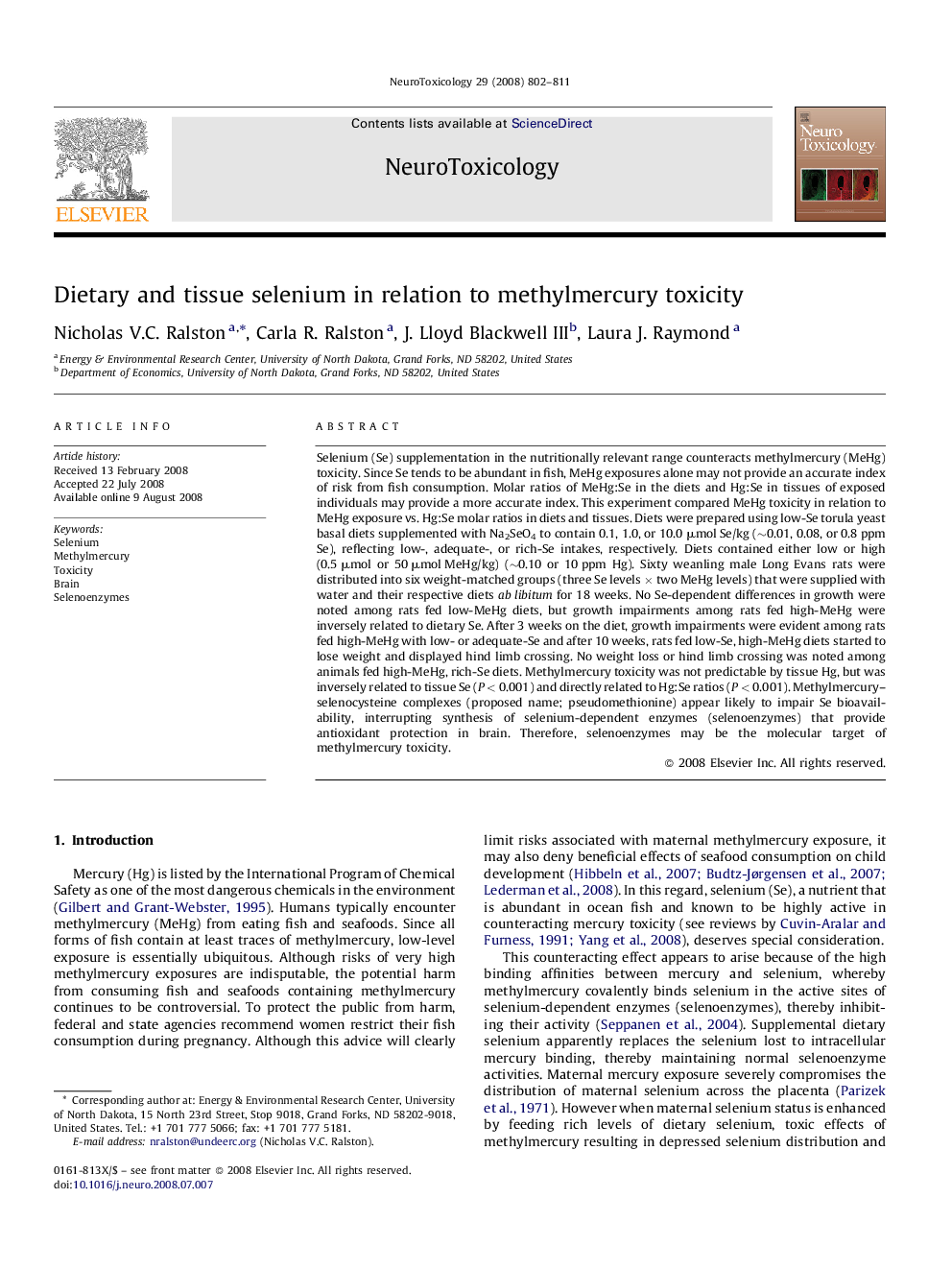| کد مقاله | کد نشریه | سال انتشار | مقاله انگلیسی | نسخه تمام متن |
|---|---|---|---|---|
| 2590217 | 1131729 | 2008 | 10 صفحه PDF | دانلود رایگان |

Selenium (Se) supplementation in the nutritionally relevant range counteracts methylmercury (MeHg) toxicity. Since Se tends to be abundant in fish, MeHg exposures alone may not provide an accurate index of risk from fish consumption. Molar ratios of MeHg:Se in the diets and Hg:Se in tissues of exposed individuals may provide a more accurate index. This experiment compared MeHg toxicity in relation to MeHg exposure vs. Hg:Se molar ratios in diets and tissues. Diets were prepared using low-Se torula yeast basal diets supplemented with Na2SeO4 to contain 0.1, 1.0, or 10.0 μmol Se/kg (∼0.01, 0.08, or 0.8 ppm Se), reflecting low-, adequate-, or rich-Se intakes, respectively. Diets contained either low or high (0.5 μmol or 50 μmol MeHg/kg) (∼0.10 or 10 ppm Hg). Sixty weanling male Long Evans rats were distributed into six weight-matched groups (three Se levels × two MeHg levels) that were supplied with water and their respective diets ab libitum for 18 weeks. No Se-dependent differences in growth were noted among rats fed low-MeHg diets, but growth impairments among rats fed high-MeHg were inversely related to dietary Se. After 3 weeks on the diet, growth impairments were evident among rats fed high-MeHg with low- or adequate-Se and after 10 weeks, rats fed low-Se, high-MeHg diets started to lose weight and displayed hind limb crossing. No weight loss or hind limb crossing was noted among animals fed high-MeHg, rich-Se diets. Methylmercury toxicity was not predictable by tissue Hg, but was inversely related to tissue Se (P < 0.001) and directly related to Hg:Se ratios (P < 0.001). Methylmercury–selenocysteine complexes (proposed name; pseudomethionine) appear likely to impair Se bioavailability, interrupting synthesis of selenium-dependent enzymes (selenoenzymes) that provide antioxidant protection in brain. Therefore, selenoenzymes may be the molecular target of methylmercury toxicity.
Journal: NeuroToxicology - Volume 29, Issue 5, September 2008, Pages 802–811